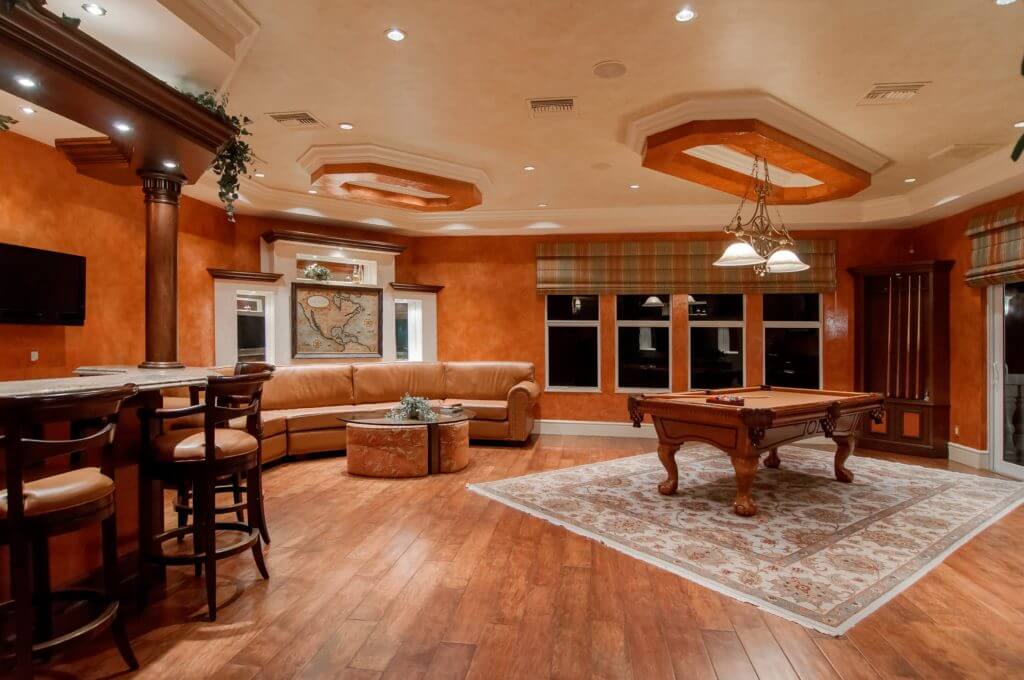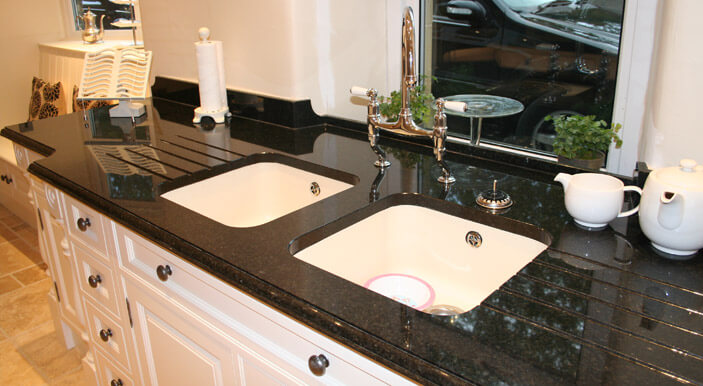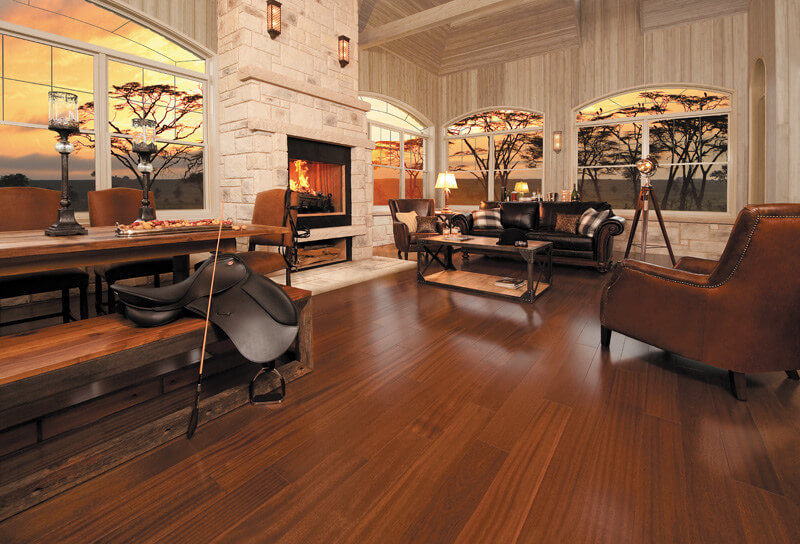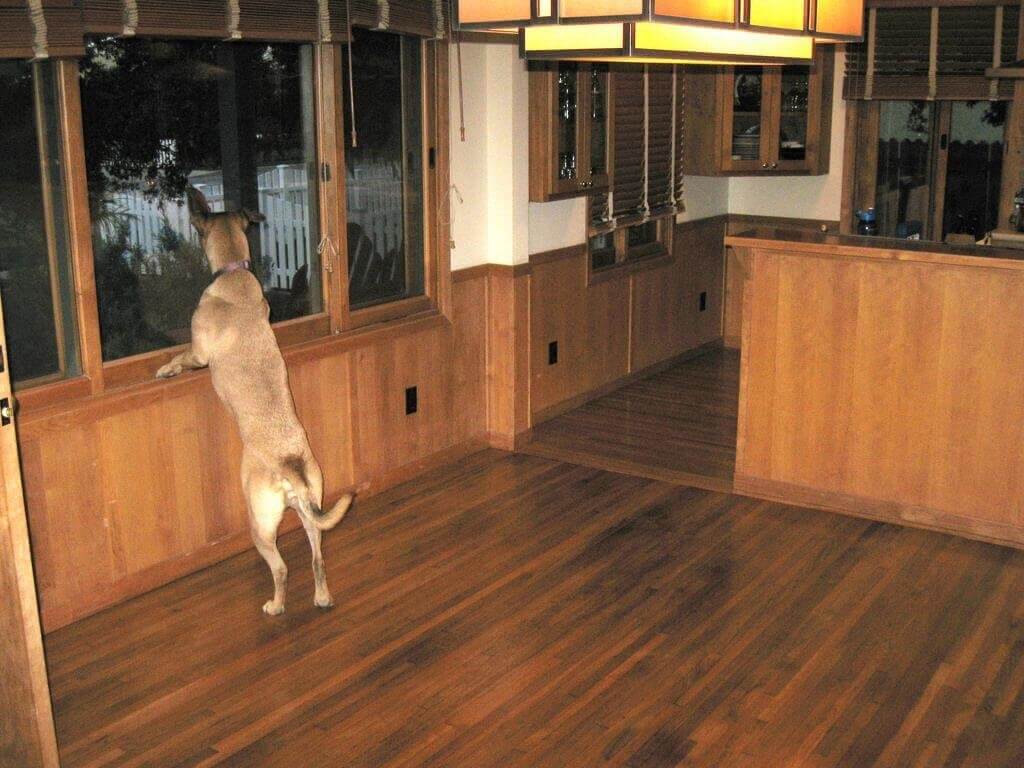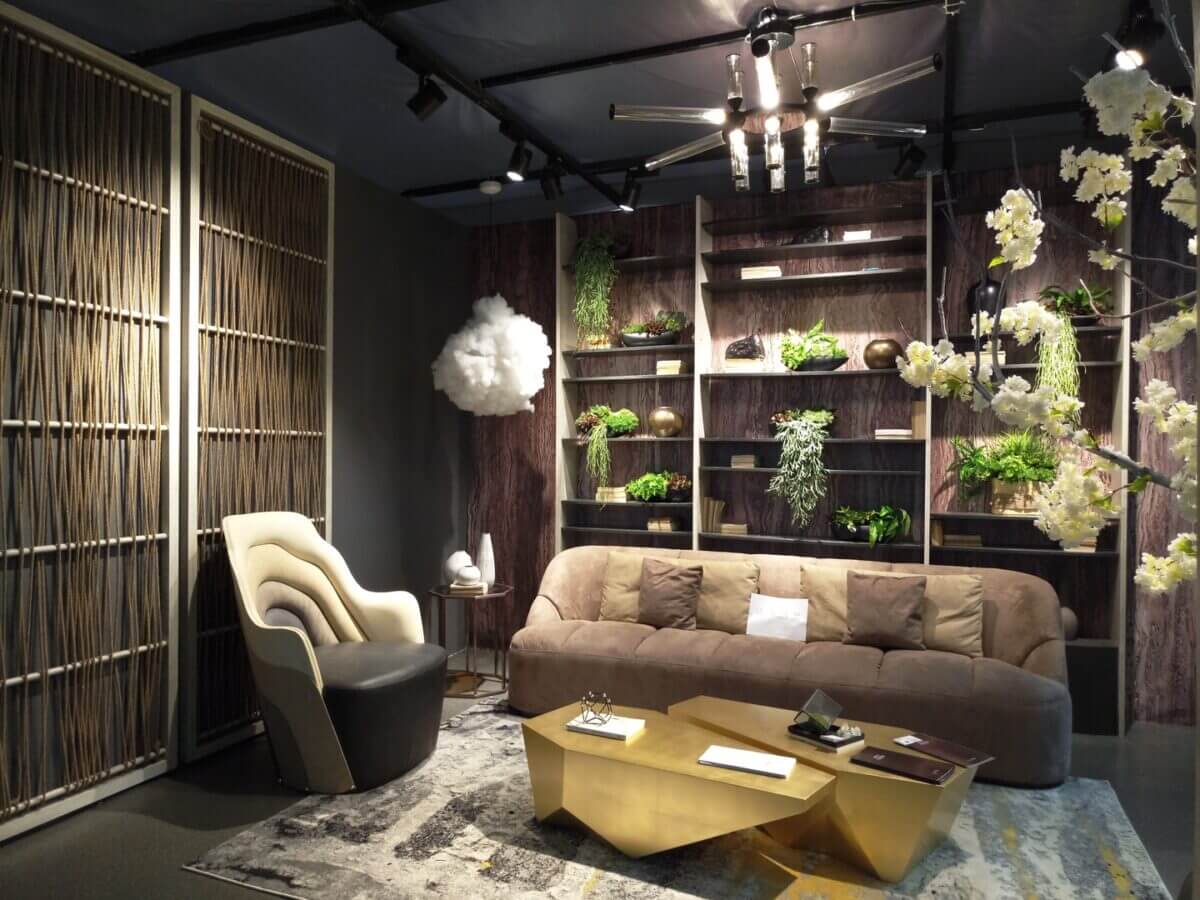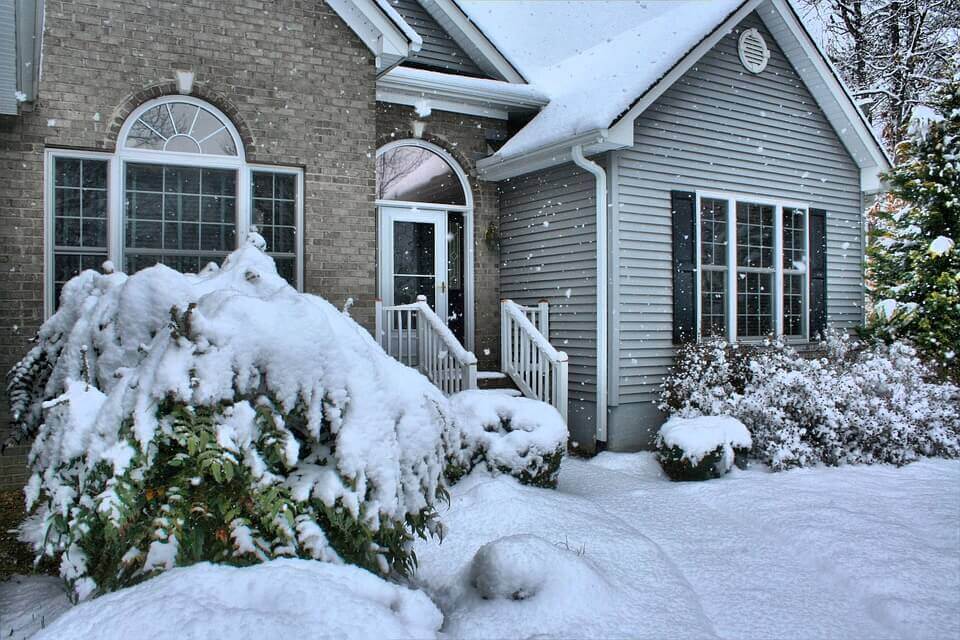So, you’re thinking about retiring your old floors, or you’re moving into a new space, and you’re interested in a natural, easy-to-maintain flooring choice. Of course, hardwood is an excellent pick for many people — it’s easier to clean than carpets and is known to stand the test of time. But, there are so many available options that finding the best hardwood flooring can be overwhelming.
How to determine the best hardwood flooring for your home:
- First, understand the pros and cons of hardwood floors.
- Next, examine your lifestyle.
- Then, set a realistic budget.
- After that, explore various hardwood types and species.
- Once you know the rest, research your finish options.
- Finally, consult with an expert.
Each of the above items has its own set of intricacies. In this article, we take some of the guesswork out of it for you. Here’s everything you need to know to choose the right hardwood flooring options.
First, the Pros and Cons of Harwood Flooring:
Hardwood is a natural, long-lasting choice for home flooring. Still, it comes with maintenance responsibilities. Before you do anything else, it’s crucial to consider the pros and cons of installing wood floors in your home.

Hardwood is durable… as long as you don’t overexpose it to water.
While hardwood floors are durable and can withstand spills and stains with proper treatment, they are especially prone to water damage (kind of like the wicked witch of the west); this makes them a risky candidate for areas like your bathroom, kitchen, and entryways. Installing hardwood in rooms where they are exposed to liquid will lead to damage.
It is easy to refinish, but not so easy to install.
Most people will tell you it is easy to refinish hardwood floors, as long as you can stay off of them for a few days. Even so, it is difficult to install them, even for experienced DIYers. So, in the beginning, be prepared to hire a professional for the installation. At the very least, consider hardwood flooring installation classes
It is considered a wise investment.
The homeowners’ paradigm is that hardwood flooring will increase the value of your property. Most homebuyer’s jump at the idea of purchasing a home with hardwood floors — in many cases, even when carpet covers the original wood flooring. So, in the long run, the initial investment is probably worthwhile.
Hardwood flooring isn’t likely to go out of style.
Hardwood floors are timeless in the decor world; it was considered a luxury interior decoration asset as early as the 1600s and is popular still today. If you choose hardwood, your floors are likely to stay in style as long as your home stands. According to GentlemanZone Magazine, hardwood stands for luxury and fine taste. It is the warm and shiny glaze of wood that noblemen love to this very day.
It isn’t the coziest flooring to walk on.
One of the downsides to hardwood flooring is that it can be hard and cold on your feet compared to carpeting. Because it is so hard, it doesn’t absorb sound; this can lead to more noise when walking around with shoes. Some people might not like this idea, for a number of reasons, and will opt for carpeting instead. But, if you’re still undecided, there are ways to reduce sound with hardwood floors.
It is an allergy-friendly, eco-friendly, low maintenance flooring option.
People with pets will tell you that carpets need to be vacuumed daily to keep a hair and dander-free home. If you have allergies to pets or pollens, you can be sure hardwood floors will be much easier to maintain, and you’ll experience fewer attacks. Also, most of the wood used for flooring materials are sustainably sourced and use non-toxic adhesives and finishes.
Next, What You Need to Consider About Your Lifestyle:
Your lifestyle dictates the best hardwood flooring option for your home — foot traffic, kids, pets, and maintenance crucial considerations. Are your floors prepared for wear and tear, or will choose luxury options for their aesthetic appeal? Consider the following.
While you probably won’t be bowling on your floors, you may live in a home with a lot of guest foot traffic, kids playing, or pets running around. In this case, you are going to expose your floors to scratches; this requires a “harder” floor and finish (or a ridiculously laid-back attitude).

On the contrary, if you have a lifestyle with more solitude, you might be able to afford to go with softer wood and a natural oil finish. If you require people to take their shoes off at the door, take precautions when moving furniture, your home isn’t prone to messes, and you expect things to stay this way, there’s no reason to worry yourself too much over potential scratching and stains.
Recommended reading for the best hardwood flooring care:
- Pets and Hardwood Flooring: Conflict or Coexistence?
- The Best (and Worst) Rooms for Hardwood Flooring
- Hardwood Flooring 101: The Best Rooms, Tips for Pet Owners, & General Maintenance
- What Kind of Vacuum do You Need if You Have Hardwood Flooring and Carpet?
Then, get Clear About Your Flooring Installation Budget:
While some homeowners consider hardwood flooring installation to be a DIY job, more often than not, they require professional installation. Whether you install the flooring yourself or hire someone to do that for you, be realistic about your budget. It’s always a possibility that you will end up spending more than you anticipate by the time everything is complete.
According to Home Advisor, the national average cost of installing hardwood in 2018 is $4,415. But this can vary tremendously based on the project.
What to consider when you set your hardwood flooring budget:
- Cost per square foot of flooring
- Size of the project area
- Subfloor, joists, and other structural materials
- Floor finish
- Molding replacement
- Professional labor costs
- Future flooring repair & replacement costs
In addition to the installation (all materials and labor), you must consider the cost of repair and replacement for your hardwood floors. So, while you may have the initial budget for an exotic species like Padauk, think about whether you will have the funds to repair or replace a more expensive floor in the future, should you have to. If you have to refinance your home to pay for new floors, it may be best to choose an option that is on the conservative side of the price scale.
Recommended reading to set your hardwood flooring budget:
After that, Consider Solid, Prefinished, Engineered, and Laminate Flooring Options:
There are three main hardwood flooring options: solid, engineered, laminate, and prefinished. Here are the similarities and differences.
Solid Hardwood Flooring
Solid hardwood is the term used for planks of wood, cut directly from the tree — it is precisely what you think it would be; this is the flooring that has been around for ages. It is the most natural and customizable type of hardwood flooring. If you choose this option, you can have any wood species, stain and flooring finish you like. The only downside is that, in general, it can be slightly more prone to damage than your other options and typically more expensive. It would be the obvious choice for any luxury home and is the only type of wood flooring that can be refinished.
Prefinished Hardwood Flooring
A convenient option for homeowners is to choose prefinished flooring. Again, this is precisely what you might think it is: hardwood flooring planks that are finished prior to installation. Both engineered and solid hardwood, exotic and common species come in pre-finished options. The upsides are that installation takes less time, you will be able to walk on your floors sooner, and you will not have to inhale sometimes toxic VOCs of polyurethane finishes. It can be more expensive than unfinished planks, but that is usually made up for by negating the final step of installation. It might be difficult to find high-end species, yet many people still consider this the best hardwood flooring option.
Engineered Hardwood Flooring
Not to be confused with laminate flooring, engineered hardwood flooring is a semi man-made product. However, it is made from several layers of real wood. The top layer is a piece of solid wood lamella, and it is most often prefinished. So, if you choose this option, colors and grains are preserved. At a glance, you won’t be able to tell the difference between solid and engineered hardwood, as you are basically left with the same color and appearance of natural wood flooring.
Laminate Flooring
Laminate flooring is another choice that many modern homeowners go with, especially in rentals or homes with small children. Homeowners with laminate flooring claim that it is extremely easy to keep clean. With laminate flooring, you don’t have the high risk of water damage. It is also less prone to sun damage and staining. But, there is a downside: it is obviously not wood. This option doesn’t leave you with the same unique grain variants and color evolution as many hardwood options.
And, Explore Common and Exotic Hardwood Species:
If you like the idea of solid wood flooring, it’s best to look at several different species. There are common American species like Oak, Maple, and Hickory, that you’ve probably already thought about. You should also look at exotic species like Australian Cypress, Merbau, or Burmese Teak. Here’s a brief breakdown of some of the most popular species that we work with to inform your journey to the best hardwood flooring.
Black Cherry:

The heartwood of Black Cherry is a stunning red-brown color and the sapwood ranges from pale to light brown with an almost pink tint. Rather than using this type of wood for an entire floor, it is usually used for accents and borders, creating a luxury decor feel. This species is more stable and softer than oak with a moderate hardness.
Birch:

Birch grain is generally wavy or curly but maintains an even, medium texture. The heartwood of Yellow Birch is usually red-brown while the sapwood is white or yellow. The heartwood of Sweet birch is generally dark brown with reddish tones and the sapwood is typically lighter. It is more stable than red oak and is known for absorbing shock.
Oak:

Oak grain is coarse with a flame or curvy pattern. White oak varies from light brown to off-white with hints of pink or gray and is naturally protected from many insects and fungi. Red oak has a strong, reddish tint and is slightly less durable than white oak, but is more likely to absorb shock. These are two of the most common species used in flooring.
Pine:

Southern Yellow Pine and Heart Pine (aka “Blue Pine”) are the two most common Pine species used in flooring. Heart Pine is yellow but contains occasional bluish-black sap stains. Southern Yellow Pine ranges in color from orange and light yellow to yellow and brown. It is known for its knotty grains and is much softer than its rival Oak flooring options.
Maple:

Sugar Maple is available in a myriad of colors. The sapwood can range from a creamy or pale white while the heartwood can be creamy white to reddish-brown. It has a closed fine, light grain and subtle appearance overall. Occasionally, on the higher end of the price scale, Maple grain presents quilted, “fiddleback,” or bird’s eye patterns.
Walnut:

Black Walnut, another common American hardwood species, contains a myriad of heartwood tones ranging from beautiful medium browns to almost purple hues. The straight, open grains can occasionally burl or curl, but for the most part, maintain a long brushstroke look. It is softer but more stable than typical American Red Oak hardwood.
African Padauk:

African Padauk is a popular exotic hardwood flooring option, mostly because of the way it changes color over time. In the beginning, Padauk floors might be reddish-orange, but will darken to red and can eventually become purplish-brown to black with age. Padauk is significantly harder and more stable than oak, making this one of the most durable available flooring options.
Merbau:

Merbau has medium to high color variants on each board. It is especially lustrous, with golden yellow streaks throughout. Like Padauk, it changes color with age, typically starting out reddish-orange and eventually turning dark reddish-brown. The sapwood is, however, much lighter than the heartwood. Merbau grain is coarse and either straight, interlocked, or wavy.
Australian Cypress:

Australian Cypress is much more stable and slightly harder than Oak. The heartwood ranges from honey-gold to brown, and the sapwood is generally cream-colored. Cypress grain is generally closed, yet it can often resemble the knotty texture of Pine. While the stability is high, some movement can happen with Cypress after installation.
Thai/ Burmese Teak:

Thai/ Burmese Teak sapwood is usually a light cream color. The heartwood ranges from dark, golden-brown to yellow-brown. Teak becomes richer in color when exposed to the sun, which is not typical of other hardwoods that often experience sun bleaching over time. It is more stable yet softer than Oak and has a straight, coarse grain with inconsistent texture.
Take a Closer Look at Wood Grains
Each floorboard will have a unique pattern in the wood grain, but there are some basic identifiers in the most common species used in hardwood flooring; one may be more appealing to you than others.

Maple, for example, has a fine, light pattern. Oak tends to have a classically beautiful grain pattern that resembles flames. Hickory grains generally have an interesting, jagged, peaked structure that resembles watercolor paintings. Cherry and mahogany, though unique in many other ways, usually have similar grain patterns in that they are non-directional and subtle. Walnut looks like someone painted long, straight brush strokes with various shades of brown on a flat surface. Each is gorgeous in their own way.
While this section is informative about hardwood species and their looks and qualities, this is not inclusive of everything you may want to know. Once you have an idea what you want, it is a good idea to further research species including Janka rating and how to protect hardwood floors from sun bleaching to learn more and make the best hardwood flooring decision.
Finally, Understand Your Options for Hardwood Finishes:
While the grain examples above showcase various shades of brown, red, and yellow, the final color and luster of your floor will be dictated by the finish that you choose. If you aren’t set on prefinished or laminate floors, you should explore at least a few different finish options.
One of the first questions you might ask is, ‘Do I actually need to finish my floors?’ — wood is lovely on its own after all. The answer is ‘yes.’ If you install hardwood floors, you don’t necessarily have to stain them, but you do need to finish them. Otherwise, you risk exposure to damage and early aging.
Here are some of the most popular hardwood flooring finish options.
- Wax Finish
- Polyurethane Finish
- Acid-Cured Finish
- Moisture-Cured Urethane Sealer
- Penetrating Oil Sealer
Each above item has pros and cons. Use this list to choose the best hardwood flooring finish based on your needs and wants.
Closing Self-Examination Questions to Choose the Best Hardwood Flooring:
As long as you remember that you should not install hardwood flooring in rooms where they will be exposed to water, you understand all of your options, and you are clear on your budget and preferences, you’re ready for the final self-exam. Here’s what you need to ask to make the best hardwood flooring decision:
- In which rooms will you install hardwood flooring?
- What will the foot traffic be like in these rooms?
- Will you choose solid, engineered, laminate, or prefinished hardwood?
- In which species are you most interested?
- What type of hardwood finish do you want?
- Does your budget match the hardwood flooring options you prefer?
And, when you know the answers to all of these questions, if you still don’t have your mind made up, consult an expert to help you make a final hardwood flooring decision. Or, check out bamboo flooring as an option. Our Denver flooring company, serving the community since 1986, provides the finest quality hardwood floors, service, and installation.

